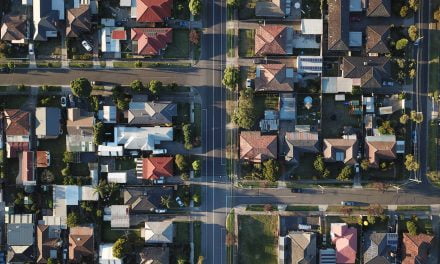The administration implemented the $75 billion Home Affordable Modification Program (HAMP) to lower a homeowner’s monthly mortgage payment by reducing their interest rates to as low as 2% for five years and extending the loan terms for up to 40 years. To sweeten the deal, the participating mortgage companies receive tax incentives.
For lenders, participation is voluntary; however it may be in the lender’s best interest to adjust the loan if it will keep the homeowner from defaulting. Approximately 340,000 (of 1.24 million) homeowners have received permanent loan modifications nationally and are making their mortgage payments on time. It is estimated that homeowners who were enrolled in the program save about $514 a month. Since HAMP began in March 2009, 1.24 million homeowners have enrolled to receive a part of the $75 billion. However, almost a third have dropped out — 155,000 of those left the program in the last month alone. A major reason for these drop outs was the initial pressure from the administration for the banks to sign up homeowners without requiring proof of income.
When the banks later requested verification, many of the troubled homeowners dropped out or were disqualified. The U.S. Treasury now requires banks to collect two recent pay stubs at the start of the process. Also, the homeowner must hand over their most recent tax returns to lenders. This does not change the number of homeowners disqualified, but only disqualifies them much earlier in the process.
The HAMP qualifications require:
- the homeowner to spend more than 31% of his income on monthly housing costs;
- the post-modification loan-to-value (LTV) ratio to be equal to or greater than 80% or less than 80% with a monthly housing expense-to-income ratio that is not less than 20%, based on verified income;
- the homeowner to already be delinquent or in imminent danger of becoming delinquent due to:
- a major reduction in household income;
- a significant increase in household expenses; or
- another type of hardship that makes the payments unaffordable;
- the homeowner to document income and expenses and provide evidence of
- hardship; or
- a major adverse change in financial situation;
- the homeowner to sign:
- a loan modification agreement;
- hardship letter; and
- other documents.
A homeowner is still eligible for HAMP if he:
- is in bankruptcy; or
- has his mortgage in foreclosure. The foreclosure will be stayed during the loan modification process.
HAMP requires the property securing the loan being modified to be:
- one of the following:
- a detached home;
- a duplex;
- a triplex;
- a four-unit residential property;
- a condominium;
- a cooperative; or
- a manufactured housing unit.
- occupied by the owner (documentation may be required); and
- subjected to a value test to determine if the loan modification makes sense.
In order to qualify for HAMP modifications, an existing mortgage must have:
- been originated before January 1, 2009; and
- an unpaid balance of equal to or less than $729,720 if the property is detached or a condominium.
- Freddie Mac requires higher limits for multiple-unit properties, which are:
- $934,200 for two units;
- $1,129,259 for three units; and
- 1,403,400 for four units.
- Freddie Mac requires higher limits for multiple-unit properties, which are:
If the homeowner qualifies, the mortgage modification will include a(n):
- reduction of the borrower’s housing costs to 31% of his income;
- interest rate cut to as low as 2% and the loan term could be extended to 40 years;
- deferment of the loan balance:
- If a portion of the loan is deferred, no interest will be charged on the deferred amount. However, a balloon payment will be due when the borrower pays off or refinances the loan or sells the home;
- reduction of the loan balance, unless the loan is owned or secured by Fannie Mae or Freddie Mac;
- unpaid interest, property taxes, insurance premiums, and other costs paid by the lender on the borrower’s behalf added to the balance of the loan (subject to state law);
- a new loan with a five-year fixed interest rate, and the rate could increase up to 1% annually (subject to a cap of the market interest rate on the day the loan was modified).
Even if a homeowner qualifies for the program and his mortgage is modified, he may still find it difficult to pay his modified mortgage while trying to cover his other debts. Two-thirds of the homeowners with permanent modifications under HAMP will most likely default again within the next year, according to studies on default rates for modifications during 2009.
However, the administration claims that approximately half of those disqualified homeowners are still getting help, many in the form of other loan modifications from the lender.
first tuesday take: HAMP will help very few people by lowering their mortgage payments, but it does not help negative-equity homeowners with a reduction in their principal balance — the real problem weighing families down and making them insolvent.
Most Californians who purchased or refinanced their homes during the housing market boom are now negative equity owners — they owe far more on their mortgages than their properties’ fair market values (FMV). These homeowners have little ability to dig themselves out of the financial black hole in which the Great Recession has put them.
HAMP does not help homeowners become solvent, but as desired by the lenders it merely extends the loan with no change in the loan balance or the negative equity condition of the home. Disregard for the need to cramdown the loan balance to the property’s value will not ease the long term burden of the homeowner.
Thus, we face the rational alternative of more strategic defaults in California. [For more information regarding negative equity owners, please see the April 2010 first tuesday article, The underwater homeowner, his future and his agent: a balance sheet reality check – Part II.]
Re: “Borrowers exit troubled Obama mortgage program” from Associated Press
Re: “Can you get an Obama loan modification” from Fox Business















Richard,
Thank you for your question. We suggest you contact a Department of Housing and Urban Development (HUD) counselor. HUD provides these counselors free of cost and will be able to speak with you on your specific situation. You can contact them at 888-995-4673 or call 800-569-4287 to find a housing counseling agency near you.
Regards,
ft Editorial Staff
My lender, Wells Fargo, apparently does not participate in the Principal Reduction program. As I’m underwater $126k on a property currently valued at $184k I’m looking for a strategy to bring value and mortgage closer together and this program looked like the right approach – until I found my mortgage holder did not participate.
Am I missing other strategies. My financial status has changed radically to the negative since I bought the house in 2003 and in addition to the value of the house being upside down, I can’t afford the payments of $1600 per month.
Look forward to your reply,
Richard Moore
Galt, California
can you have your modification completed if you have liens on your title report if so how do you have this done, can the payment of the liens be apart of the modification of the loan? Can some one answer this question?
I believe HAMP is great if you get qualified……
At least 7 or 8 thousands visitors at your weblog now, nice results for single website.
Naturally, tons of stupid comments. People, why are you writing in comments of pure blog – great article, good desing, thanks author?
Vernon, Do the math before you open yer yapper. If you are paying 6% for the 20 remaining years and they reduce it to 3% you will pay far less interest over the life of the loan even if it stretches to 40 years. Get yourself an amortization spreadsheet and play with the numbers. The real problem with HAMP is qualifying for it – you need to fit in an income window between not having enough income to pay the current payment but still enough income to pay the modified payment. If you have other debts the window can become real small.
HAMP is the most ridiculous thing I have ever heard of. Does the administration think we are too stupid to figure out that this is not saving money. Let’s see….lower interest but extend loan term. Hmmm, let me think now….NOT!
Let’s not forget about HAMP Principal Reduction Alternative Update!!! This is the homeowners dream and fulfills the concern addressed in this article. It was announced last month and is not effective until October this year, but will be the first plan of action to get the homeowners payment to the 31% mark.
The program will reduce principal to 115% LTV over a period of 3 years. If the principal reduction does not get the borrower to the 31% mark on its own, then the “waterfall effect” triggers an interest rate reduction, term extension and forbearance in that order and when necessary.
It is indeed to early for us to determine the effectiveness of this program, since lenders/servicers are not required to use it until later this year, but we’ll remain cautiously optimistic, considering the delays and issues with the first rounds of HAMP. So far it seems to blow BofA’s “principal reducation” out of the water.
Here’s some good resources for additional info:
HAMP Principal Reduction Alternative Update
http://bit.ly/ci4BJ5
Treasury Prepares Principal Reduction Initiative under HAMP « HousingWire
http://bit.ly/c9Vuif
HAMP SPA Servicers
http://bit.ly/c8GQnW
Our services include do-it-yourself loan modification with coaching as well as professional third party representation for loan modifications and short sales (processing and/or negotiation). In addition, we have an online management system that you will be able access for full transparency of your file, so you can monitor our activity and all of the work being completed on your modification in real time, 24 hours a day.
If you would be so kind to refer our services to those in need, we would be greatly appreciated (and so would they).
All the best,
Brett Robbins
President
The Homeowner Defense Network
o. 619.MODIFY.8 (619.663.4398)